Food Insecurity Is Becoming Worse — Here’s Why, and What We Can Do


A recent World Food Programme report highlights the severity of global food insecurity, citing 750,000 people at immediate risk of starvation or death. Further, there is an all-time high of 49 million people at risk of succumbing to famine.
In a pre-pandemic world in which we already once had 135 million food-insecure people, that number has doubled in just two years, according to the U.N.
It can be easy, however, to brush off this news because it’s unlikely that you’ll end up going hungry. The brunt of the catastrophe will be felt by those living in the world’s poorest countries in Africa and the Middle East, but the rising prices and food insecurity will have an impact on everyone.
What is causing food shortages and soaring prices?
To begin talking about how to fix this mounting food insecurity problem, we first need to understand its causes, of which there are many.
The conflict in Ukraine
Perhaps the most obvious and largest factor contributing to the food shortage is the conflict in Ukraine. Both Russia and Ukraine are vitally important agricultural countries, combining for upwards of 25 percent of global wheat supply.
The two countries combine to serve about three-quarters of the world’s sunflower oil, and Ukraine is the world’s third largest corn exporter at 11.4 percent of global corn exports.
These are critical food-producing countries, and they are currently at war with each other.
Part of the looming food shortage problem boils down to farmland being destroyed by war activities and resources diverted to fight in the war.
The bigger and more immediate problem, however, is the blockade of the Black Sea ports. Reports say that Ukraine is sitting on more than twenty million tonnes of grain that it is unable to export because its sea ports are blocked.
Ukraine has littered the Black Sea with sea mines to prevent Russian ships from advancing, but inadvertently blocking routes for export. Russia claims it will allow food shipments to pass through via escort, but that Ukraine first needs to remove the mines so that the ships can navigate the waters safely. Talks are ongoing to make this happen but it’s a political stalemate right now.
Fertilizer price hikes
Russia is (in)conveniently also the world’s largest fertilizer exporter. The Western sanctions imposed on Russia have led to a shortage of fertilizer products, which in turn has raised the prices of the fertilizer that is available.
Farmers worldwide are facing tough choices. Record-high fertilizer prices are making it difficult for farmers to turn a profit. Some are opting to reduce the amount of fertilizer they use, while others choose to reduce their seeding acreage, both scenarios leading to lower yields.
Extreme weather events
The increase in frequency and severity of extreme weather events affects the output of crops. The world’s second largest producer of wheat, India, is experiencing one of its hottest years on record. This has lowered their wheat output significantly and led the government to introduce a ban on wheat exports.
Export restrictions
Just like in India, countries around the world are putting restrictions on the amount of food products they can export amidst concerns of shortages. Export restrictions are going to have the most significant impact on the countries that are net importers of food, a list that is dominated by low-income countries — the same ones most at risk of long-term food insecurity.
Supply chain disruptions
The blockade of the Black Sea ports is the major focal point right now, but supply chain disruptions are happening worldwide, in large part due to pandemic restrictions. China’s zero-Covid strategy has led to very strict lockdowns, halting work, and causing a ripple effect across the world’s supply chains.
High oil and gas prices
Gas prices are as high as they’ve ever been in the U.S. and worldwide. This has a trickle-down effect on every aspect of global markets. From producing to transporting food, high gas prices influence the purchase price of consumer food products.
What can be done to alleviate food insecurity?
Peace in Ukraine would be a wonderful place to start. As well, removing, or at least reducing, some of the Western sanctions on Russia would allow for Russian food products to flow more easily into global markets. Unless any of us participate in diplomatic talks, however, we may have to begin looking at other workable solutions.
The United States is the world’s largest producer of corn. However, forty percent of corn cultivated in the U.S. goes towards producing ethanol to be blended in fuel. This is a mandate of the U.S. government. Facing a severe food shortage, reducing the amount of corn diverted to gasoline production would increase food stocks.
Food waste is another problem area. On average, the American household throws away about 660 pounds of food per year. Businesses and individuals both have a part to play in fixing this number.
Meat consumption also uses up more land and food than grains or vegetables. Three pounds of cereals go into producing one pound of pork. You may not want to hear it but reducing meat in your diet could mean more food available to go around.
Global cooperation is really at the core of what’s needed to alleviate the food crisis. Countries refraining from imposing export restrictions and working cooperatively to distribute food around the planet will give more people reliable access to food.
Image credit: LilacDragonfly via Pexels
Join Us: Sustainability For Ukraine Fundraiser, Tuesday, June 21


Please join us for this global 24-hour web-a-thon on the future of sustainability, as well as a fundraiser for civil society in Ukraine on Tuesday, June 21, starting at 8:00am EST.
The war in Ukraine comes on top of a deluge of unprecedented global events that threaten to turn back progress on the United Nations’ Sustainable Development Goals (SDGs) and undermine the well-being of people and the environment around the world.
Starting on Tuesday, June 21, at 8.00am EST / 1:00pm BST, the global sustainability community will come together for 24 hours and explore the implications of recent events and global trends for the future of sustainability and the need for more collaborative, inclusive efforts to advance sustainable development. This event will also raise vital financial support for local NGOs in Ukraine that have been devastated by the invasion by Russia.
To review and register for the remarkable sessions and to donate to our sisters and brothers working on sustainability issues in Ukraine, please visit the Sustainability For Ukraine website.
More than two dozen organizations have committed to lead a dedicated session of the web-a-thon, providing a robust program of dialogue on the sustainability agenda. Partners include: 3BL Media, Akatu Institute (Brazil), AuctusESG (India), B Lab, BBMG, BSR, Business Fights Poverty, Business Leaders Forum, CBSR (Canada), CSR Europe, CSR Ukraine, ELEVATE, Forum for the Future, GlobeScan, GreenBiz, GRI, Maala (Israel), Net Positive, ReThink (Hong Kong), SB Japan, SB Thailand, Sustainability Connect (Singapore) and WWF.
A range of global thought leaders will be speaking throughout the web-a-thon including Paul Polman, John Elkington, Georg Kell, Ertharin Cousin, Ndidi Nnoli-Edozien, Naoki Adachi, Esther An, Andreas Beckmann, Vartan Badalian, Raphael Bemporad, Stefan Crets, Chris Coulter, Hans Daems, Kevin Franklin, Marcel Fukayam, Bart Houlahan, Svein Tore Holsether, Leslie Johnston, Agnes Kalibata, Momo Mahadev, Helio Mattar, Jane Nelson, Maryna Saprykina, Kamal Seth, Zahid Torres-Rahman, Sally Uren, Peter Paul van de Wijs, Jenny Vaughan and Namita Vikas.
If you're not able to join us live, still be sure to register so you can receive a link to the web-a-thon recording.
The organizers wish to thank Sustainability For Ukraine’s sponsors — City Developments Limited (CDL), Gore Mutual Insurance Company, ServiceNow, Sun Life, TELUS and Vale — for their generous donations in supporting local NGOs in Ukraine to build a stronger foundation for the future of sustainability and civil society in Ukraine.
For more information on this event or to make a corporate donation or become a sponsor, please contact stacy.rowland@globescan.com.
Image credit: Diana Vyshniakova via Unsplash
Skoll Foundation Keeps Funding and Seeking Transformative Social Change
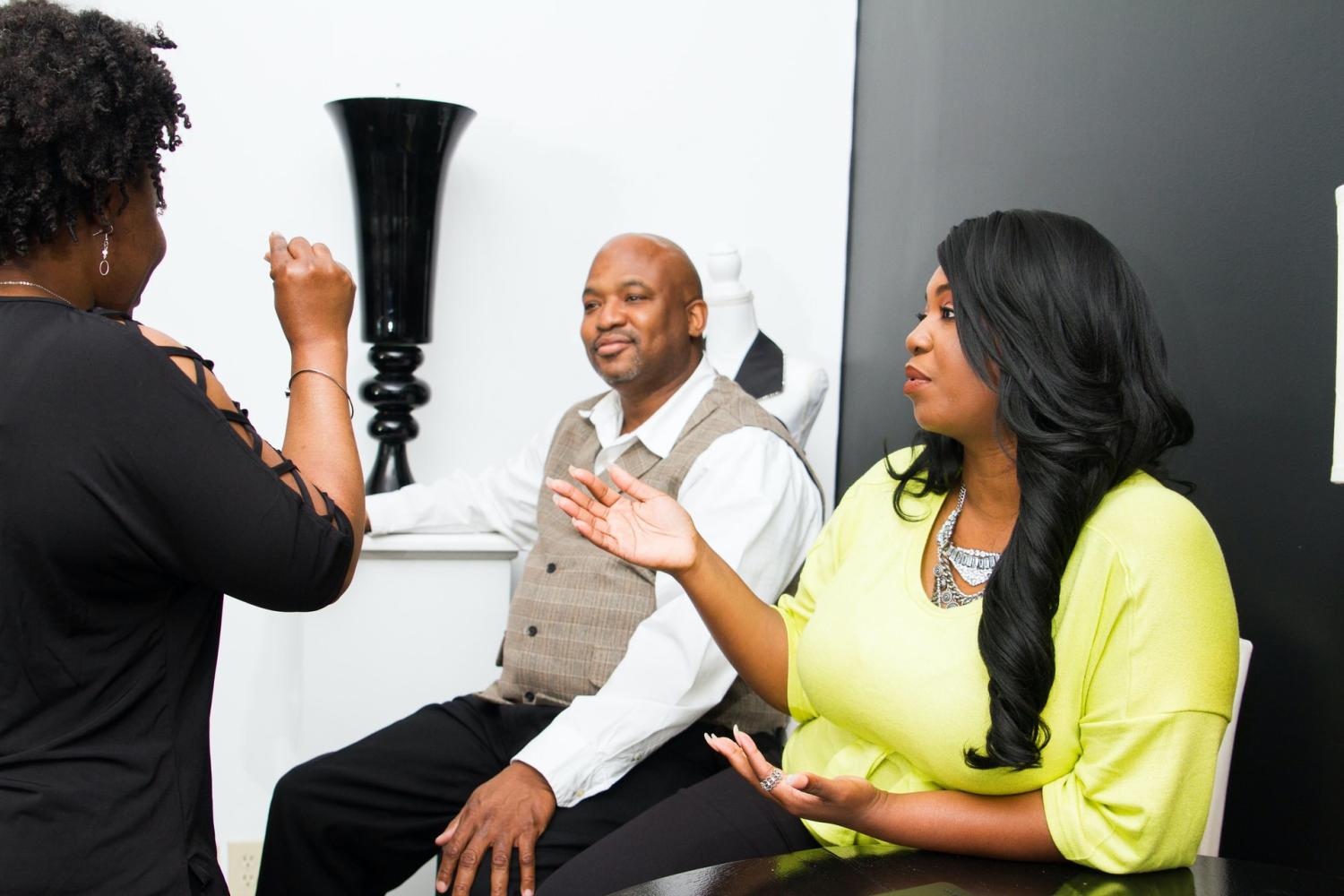

The Skoll Foundation, founded in 1999 by Jeff Skoll, is well known as a philanthropic leader in the area of stimulating racial equity through capital investments in organizations that solve problems of economic inequity. The goal is to achieve transformational social change, not just invest dollars. Therein lies the work of Common Future.
More than 20 years of commitments to social innovation
Each year, the Foundation awards up to ten Skoll Awards for Social Innovation to organizations that meet stringent qualifications: the potential to initiate systemic institutional change from the community level to the global geographic level, and present a plan for long-term growth and sustainability.
The awards are considerable — $1.5 million in unrestricted funding over three years, as well as an additional amount of $750,000 of support. Awards are made to those with a strong leadership and governance, and with strong financial health. The organization must have a history of making an impact in their specialized area, be strategically placed for success, and be closely aligned to the target audience.
With this high bar established, The Skoll Foundation chose Common Future (CF) as a winner of a 2022 Skoll Foundation Award.
How Common Future defines community engagement
CF is a nonprofit which has at its core a wealth distribution model built on communal support that includes equitable access to capital, participation in democratically governed funds or opportunities for employee ownership of local businesses.
In addition, CF offers a network of community leaders, funders, and others working towards a collective vision and mission to shift wealth and power into marginalized communities.
The organization works to serve five principles:
Self-determination: Communities should have the power to own, transform, and create wealth in local economies that best serve their interests.
Frank talk about race: Economic equity will be achieved when we talk explicitly about race and the wealth gap.
Solution-focused: We must advocate for the economy we want, not only against the economy we have.
Amplifying voices: It is important to celebrate and lift up ideas, solutions and diverse voices that aren’t heard.
Shifting the narrative: We must lift up local perspectives to increase the possibility that they will thrive in the national mainstream.
“We look at practices and beliefs that perpetuate inequity and generate new ones in their place,” said Rodney Foxworth, CEO of CF. “And we’ve been fortunate to work closely with capital institutions, helping them move $280 million to community wealth building organizations and the businesses they support.”
Making philanthropy more equitable and accessible
“In this work we realized that the challenge often centers around what changes they [capital institutions] are willing to make to how they deploy money,” added Foxworth. “If we point out, for example, that the grant process is arduous and excludes smaller organizations or that the focus on return on investment leads to terms that hinder growth, this requires capital holders to rethink how they work from the ground up. It requires them to see how ‘business as usual’ practices and the beliefs around them exacerbate inequity.”
The Boston Ujima Project is a great example of loosening control of capital in the United States using the CF Model. Ujima has created an impact investing fund where the community has decision-making power over investments to uplift local, minority-owned enterprises.
The fund is governed by voting members, all of whom are local residents and have a stake in Boston’s working-class communities of color. Membership only requires a $25 fee, and Ujima seeks to build the fund to $5 million by 2020, with community residents, local foundations and wealthy people as investors.
The intricacies of the step-by-step process leading to an investment of $200,000 by Ujima in a local program can be found here.
What minority business entrepreneurs find themselves up against is a system of embedded economic inequity, lack of access to capital being the common roadblock. According to the U.S. Small Business Administration, most microbusinesses cost around $3,000 to start, while most home-based franchises cost $2,000 to $5,000. At the same time, for various reasons, including systemic racism, in 2019 the median white household held $188,200 in wealth — 7.8 times that of the typical Black household at $24,100.
Foxworth added, “With the Skoll Award for Social Innovation we joined a global community of people who are tackling pressing issues around the world. The award signals that Common Future has a promising model and the issue of economic inequity — specifically the growing racial wealth gap — needs greater attention.”
Image credit: Brandy Kennedy via Unsplash
Needle Finally Moves on Common Sense Gun Safety Regulations


After yet another long and bloody stretch of gun violence, a groundswell of public pressure seems to have gotten through to some Republican members of Congress. A group of ten U.S. senators has finally expressed their willingness to break lockstep with their party’s orthodoxy on gun control. If they follow through, retailers and other businesses can look forward to more legislative support for their own gun safety rules. However, there is still much damage to undo, as the LGBTQ community and other vulnerable groups face renewed threats from right-wing domestic terrorists.
Why the “party of big business” loves the Second Amendment
Anyone who still believes that the Republican and Democratic parties are “both the same” has not been paying attention over the last 20 years or more. On gun control, the Republican party and its allies on the U.S. Supreme Court have been treating the Second Amendment’s right to bear arms as a pseudo-sacred, untouchable provision, even though every other amendment in the Bill of Rights is subject to restriction and interpretation. Even the word “bear” itself is still interpreted as pertaining only to portable firearms, not hand grenades, rocket launchers and other armaments, a contradiction that the pro-gun lobby conveniently skims over.
Coincidentally or not, the Second Amendment is the only item in the Bill of Rights that can be monetized. Alone among the civil rights outlined in the first 10 amendments to the U.S. Constitution, exercising the right to bear arms requires a transaction of some kind, whether a purchase, gift, inheritance or other assignment.
The element of purchase and profit explains why the National Rifle Association (NRA) started out as an organization dedicated to “training, education and marksmanship,” only to shift focus during the 20th century as gun manufacturers sought markets outside of military, law enforcement and licensed security.
Today the Second Amendment has become nothing more than a money mill for gun manufacturers and other stakeholders, a major public health threat, and a leading cause of death in the U.S., especially among children and youth.
Calling out the NRA on gun safety and security
The action in the U.S. Senate last weekend represents the first significant attempt to inject some common sense into federal gun control measures in 26 years, after the ban on assault weapons expired in 2004.
On Sunday, a group of 10 Republican U.S. Senators joined with 10 of their Democratic counterparts over the weekend to announce a proposed framework for new gun safety legislation. The group is spearheaded by Senators Chris Murphy (D-CT) and John Cornyn (R-TX). Both of the senators represent states where some of the most notorious episodes of gun-fueled mass murder in recent years took place: the 2012 Sandy Hook massacre, the 2019 El Paso massacre and the Uvalde massacre of May 24.
“Families are scared, and it is our duty to come together and get something done that will help restore their sense of safety and security in their communities,” the group stated in a press release dated June 12.
Editor's note: Be sure to subscribe to our Brands Taking Stands newsletter, which comes out every Wednesday.
Some elements of the new framework do not actually represent a game changing breakthrough on gun control. However, these parts of the framework do undercut the persistent argument that an armed society is a more secure society, by proposing additional funding for mental health resources, school safety and student support.
The additional funding raises the question: If guns make people safer, why do we need more security?
That’s a good question. It puts the ball in the court of the NRA, which has long supported similar safety and security measures.
In fact, just days after the Uvalde massacre, the NRA touted its “School Shield” grant program, which launched after the Sandy Hook school massacre. According to information gathered by independent reporter Judd Legum, NRA funding for the grant program was never particularly robust and it dwindled to a trickle last year.
Pulling the rug out from under the constitutional argument
In addition to undercutting the NRA on safety and security, the proposed framework firmly establishes the Second Amendment as just one among other nine other items in the Bill of Rights, each of which is subject to various restrictions and interpretations.
In their announcement, the bipartisan group starts by putting gun safety and security at the top of their to-do list, with these words: “Our plan increases needed mental health resources, improves school safety and support for students…”
The same sentence, though, ends with a ringing endorsement of common-sense restrictions on the right to bear arms: “…and helps ensure dangerous criminals and those who are adjudicated as mentally ill can’t purchase weapons.”
The passage continues by emphasizing that all of these elements are needed. “Most importantly, our plan saves lives while also protecting the constitutional rights of law-abiding Americans,” they state.
Schools are not the only problem
In addition to refocusing the outcry over gun violence in schools and other public places, the new framework also brings domestic violence and other non-public situations into the conversation.
The data is clear. While the mass carnage at schools and other public places is a headline-grabber, guns kill more children and youth by suicide and in situations outside of schools. According to the organization Sandy Hook Promise, 12 children die of gun violence every day and another 32 are injured. Women — including pregnant women — are also especially vulnerable to lethal domestic violence.
Additionally, the statistics show that most gun violence is not perpetrated by people with a history of mental illness.
“Hardening” schools will do little to improve public safety overall, as the new framework recognizes by focusing attention on the control of gun possession by convicted domestic violence abusers and those under restraining orders, including “those who have or have had a continuing relationship of a romantic or intimate nature.”
Next steps for common sense gun safety
As one indication that the proposed framework is a step in the right direction, it has received the seal of approval from two leading gun safety organizations, Everytown for Gun Safety and its affiliate, Moms Demand Action.
Nevertheless, the legislative process is far from over. If the proposed framework is watered down or blocked in the Senate, it will be back to square one for common sense public safety protections, and the danger is growing as far right extremist groups increasingly turn to violence in communities across the U.S.
In particular, business leaders who profess to support LGBTQ rights should start calling their senators now. Some of the same far right extremist groups that participated in the failed insurrection of January 6, 2021 have begun to exploit Pride Month as an opportunity to recruit new members by disrupting and Pride events and terrorizing participants, including a children’s library story hour.
Last week, an outbreak of violence at a Pride event in Idaho was only prevented at the last minute when a quick-witted citizen reported that they saw a “small army” of men armed with piling into a U-Haul truck that afternoon. Thankfully law enforcement took their report seriously, acted promptly, and arrested the entire group of 31 men.
This time, the public safety system worked — and this time, the men were not bearing firearms. Sooner or later, though, the luck will run out, unless individuals bent on violence lose their free and easy access to firearms.
Image credit: Chip Vincent via Unsplash
Wanna Support Pride Month? Take Your Team Out to the Local LGBTQ Bar
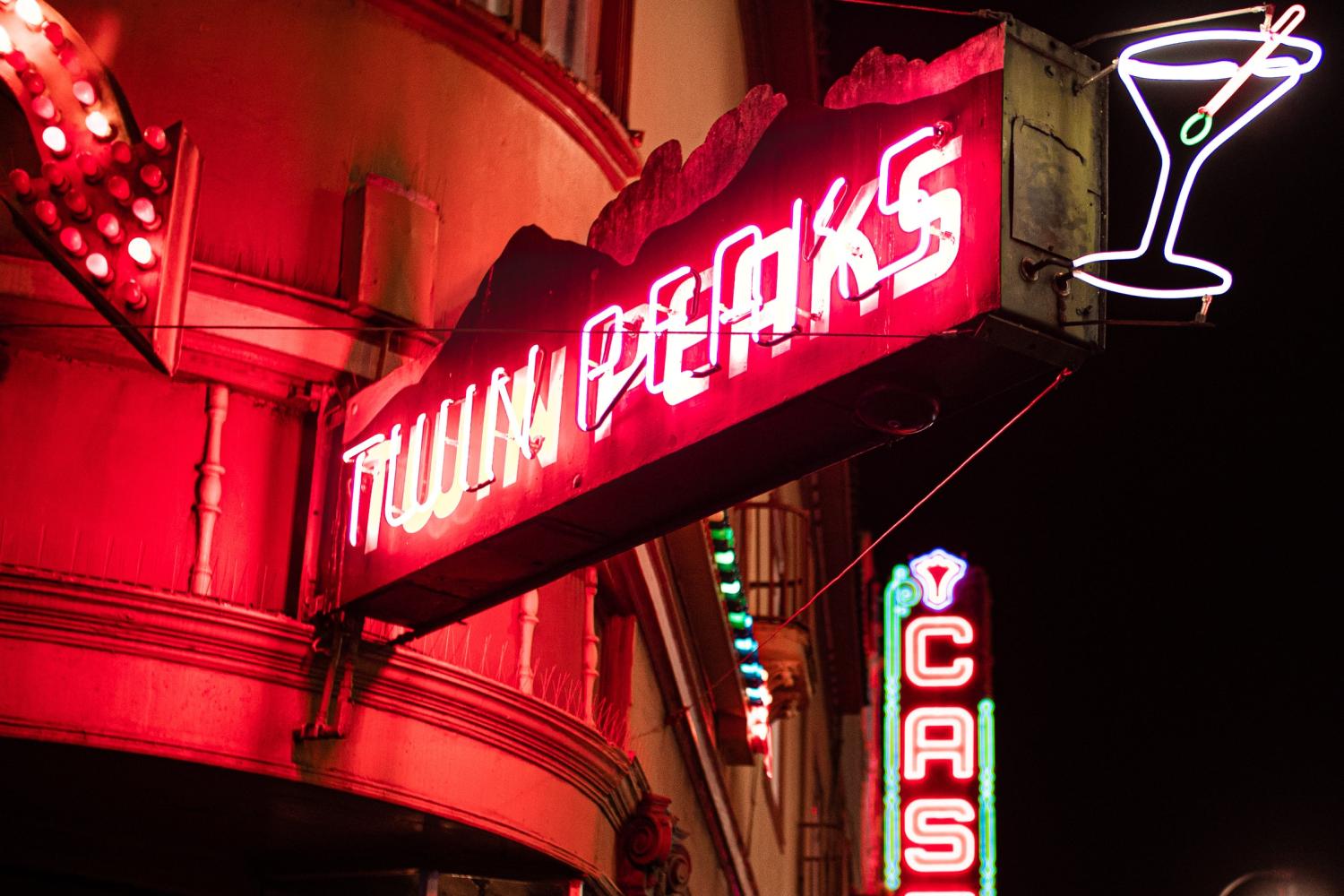
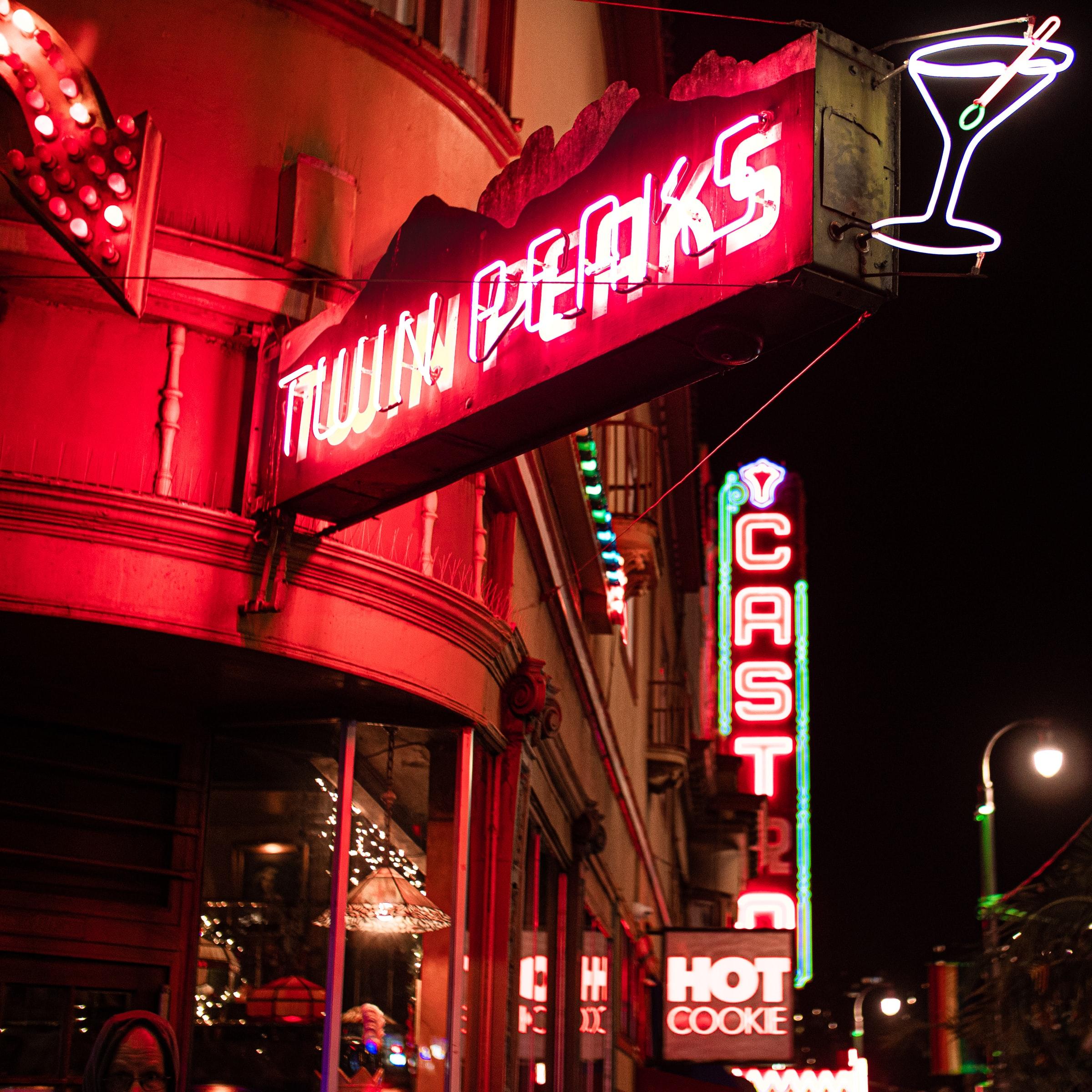
Twin Peaks in San Francisco's Castro district, in business since 1973 and one of many LGBTQ bars that almost closed during the pandemic
We’re being told the pandemic is over, though the data, not to mention our social media feeds, are telling us otherwise. But for many communities, including LGBTQ people and businesses, the pandemic’s impact will be felt for years — and that's true for many gathering places like the local LGBTQ bar.
During 2020, tens of thousands of bars closed. For LGBTQ-friendly bars, the pandemic hastened their decline across the U.S. Already challenged by gentrification, dating apps and changing demographics, the pandemic led to more closures of many an LGBTQ bar in liberal cities and conservative rural outposts alike.
Now, the evidence suggests that the neighborhood LGBTQ bar is making a slow, even steady comeback. Grassroots initiatives such as the Lesbian Bar Project are seeking to celebrate and preserve what few lesbian bars are left. Meanwhile, more entrepreneurs across the U.S. are refurbishing and investing in bars, and even reinventing them so they’re more than a place to down a cold one — more importantly, they are also reinventing these spaces, making them more welcoming to those who are non-binary or transgender and historically never felt entirely welcomed in a “gay” or “lesbian” bar.
Editor's note: Be sure to subscribe to our Brands Taking Stands newsletter, which comes out every Wednesday.
Here’s the reality: Bars have often been a safe haven for many LGBTQ people, and at a time when we hear constant banter about “community,” many bars have served that purpose for years. To that end, with companies opening their wallets, purses and fanny packs during Pride Month, here’s an idea: If supporting the local community matters so much, then put your money and mouth where your expense account is and take your team out to the local LGBTQ bar.
There’s no shortage of data concluding that the best place to spend money for maximum impact is as close the home office as possible. Sponsoring a float or booth for a Gay Pride parade is a nice enough gesture, though those same funds could be used more at a neighborhood LGBTQ center or youth homeless shelter. Sending a check to the Human Rights Campaign (HRC) is great for optics if your company scored 100 percent from that group; journalists such as Judd Legum, however, have pointed out that the coveted HRC rankings don’t take into account those same corporations’ donations to anti-LGBTQ and anti-trans politicians.
So, this suggestion may not be on your company’s Pride Month-themed bingo card, but here’s how your company can show it’s an ally of the LGBTQ community: Take the team to the local LGBTQ club or bar. Don’t make a big show of it: To be clear, this isn’t a call to sponsor a “happy hour,” as this is an exercise in inclusion, not branding. Here’s how you go about it: Ask your queer employees for suggestions on where everyone would feel welcome, and then go. After all, there’s no better way to align oneself with a community than to share their experiences. As Ella Braidwood summed up for the Washington Post earlier this week:
“If you are straight, try to imagine that: what it would feel like to know that, at some point — not if, but when — you’ll get heckled for simply holding your partner’s hand. It might not bother you the first time, maybe not even in the second or third instance. But consider how 10 years of it, the length of time that I’ve been 'out,' might grind you down. That’s the thing with discrimination: It’s exhausting. There is an attrition to it. I am tired of being shouted at.
What I’m trying to say is this: LGBTQ clubs are like sanctuaries to me; pink-lit paradises, where I can forget about all of that…They are among the few places where I can kiss whom I want, knowing I won’t get harassed.”
Not sure where to begin? Start with Gay Cities, Travel Gay or the Spartacus gay guide.
Image credit: Matt Dodd via Unsplash
Honest Tea May Be Down, But Don’t Count Out Purpose-Based Products Yet

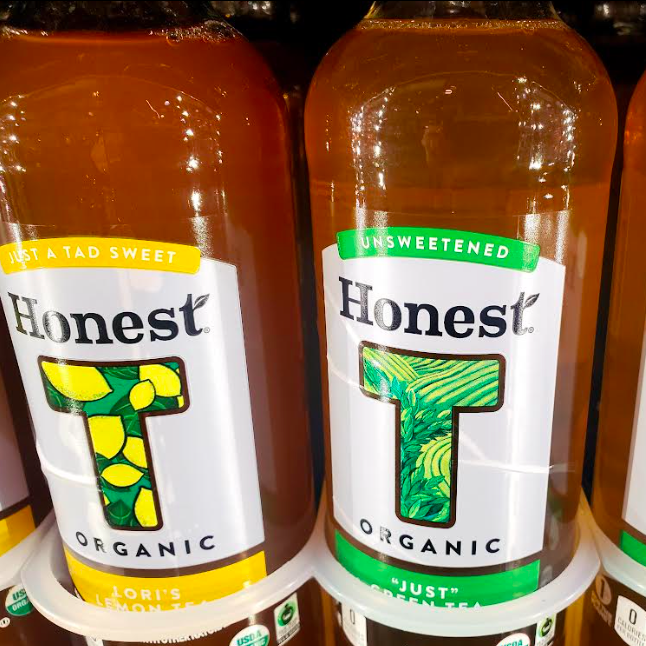
An Honest Tea display at a California Whole Foods
The success of Honest Tea under Coca-Cola was a shining example of the value of purpose-based start-ups going big — that is, until the beverage behemoth announced last month that it would be dropping the organic, fair-trade ready-to-drink tea line at the end of the year. While this is a massive blow to purpose-based players seeking to join the mainstream, Eat the Change has already said that it is planning to pick up where Coca-Cola dropped off and will be launching a new line of bottled teas inspired by Honest. The short-lived brand's quick rise from inception to acquisition and growth, followed by a sales stumble that led to its dissolution, suggests that while the market exists for such beverages, perhaps there would be greater flexibility to weather changes to that market under a parent company that is also purpose-based.
Honest Tea originally made a name for itself in the ready-to-drink beverage industry through organic, fair-trade teas bottled with less sugar than its competitors. The brand, which began in 1998, offered its first organic tea in 1999 and its first fair trade-certified tea in 2003. Its success got Coca-Cola’s attention, which purchased 40 percent of the start-up in 2008, followed by the rest in 2011.
The acquisition wasn’t the end of Honest’s purpose-based operations, however. Only 40 percent of the tea Honest used to produce its products was fair trade certified in 2008 when the beverage giant first bought in. By the time the takeover was complete, 100 percent of the brand’s sourced tea leaves was certified. In addition, by 2015 all of the sugar purchased by Honest was also fair trade-certified. Those labels mean a lot considering that they guarantee reasonable working conditions for workers and ensure that a portion of the profits is returned to the community. The fair trade premiums paid by the drink maker to select tea farms in India resulted in real-life improvements for those living in the area—allowing for the purchase of precautionary equipment like mosquito nets as well as building a hospital.
While some decried the purpose-based brand for selling its soul to the highest bidder, the way Honest saw it the idea was to sell as much of its superior product as possible — and it did so while holding true to its principles. In 2010 the brand sold $71 million worth of bottled beverages. Eight years later, those sales had surged to $600 million. So, what was the problem? 2019 witnessed a 19 percent drop in sales of Honest Tea drinks. And while this was part of an industry-wide trend that saw bottled tea sales drop across the board that year, Coca-Cola took the initiative to consolidate its holdings.
The route taken by Honest Tea may appear to be proof that purpose and profit cannot co-exist in the long run, but Eat the Change isn’t taking it that way. Entrepreneur Seth Goldman, who founded Honest and has been involved in Beyond Meat, Plant Burger and now Eat the Change, got to work on a replacement as soon as he received word that Coca-Cola would be dumping the organic, fair-trade brand in favor of focusing attention on its Gold Peak and Peace Tea brands instead. In an interview with Mashed, he quoted a letter he received from one of the suppliers as part of his motivation to start again with a new bottled tea based on the same principles:
"Honest Tea is very connected to our own gardens and people, so the news is definitely a gut punch for us as well. While the financial consequences are material, the loss of confidence in organic and fair trade agriculture that this decision is likely to engender in the wider community is very saddening and probably more consequential, especially in terms of lost motivation at origins. We've been so inspired to be part of the journey that you led and want to try to continue the effort and fight the suggestion that this was all a failed experiment."
There is plenty to learn from Honest Tea’s demise — but the idea that principles and profit cannot coincide is not one of those lessons. Rather, this example suggests the need for a purpose-based parent company that won’t drop its subsidiaries the moment the market fluctuates. Whether or not such a conglomerate will emerge could depend on entrepreneurs like Goldman and how willing they are to compete with the big guys instead of trying to join them.
Image credit: Leon Kaye
How Unilever and EY Help Support Clean Water Entrepreneurs Worldwide
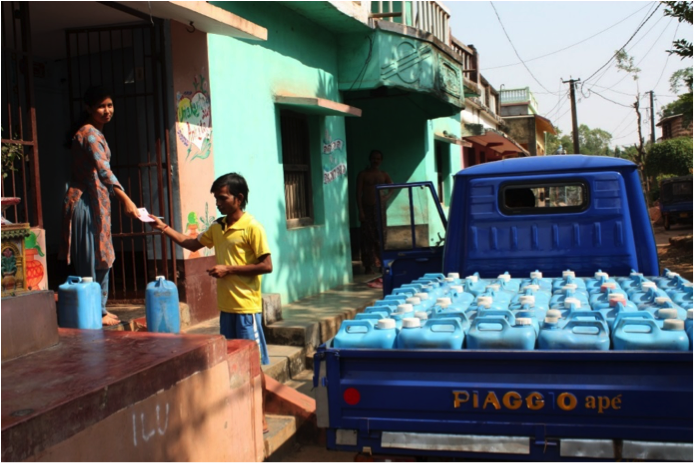

A quick glance through the 17 Sustainable Development Goals (SDGs) makes one thing clear: water is the through line. Even when not explicitly stated, the lack of access to safe and clean water puts all of the other SDGs at risk. Transform, an initiative supported by Unilever, the U.K.’s Foreign, Commonwealth & Development Office and EY aims to address the issue directly by supporting on-the-ground entrepreneurs in South Asia and sub-Saharan Africa to help solve their communities’ water challenges.
A renewed focus on clean water
According to the World Health Organization (WHO) and UNICEF, in 2020, one in four people lacked access to safe drinking water in their homes and half of the global population lacked access to safe sanitation. Further, during the COVID-19 pandemic, a third of the population could not safely wash their hands in their homes, a basic function proven to prevent the spread of the virus as well as other infectious illnesses. Many of the challenges require community-specific solutions, and that is where the support from Transform can bolster local entrepreneurs’ efforts.
The Transform initiative supports entrepreneurs through funding, assistance in scaling operations, removing barriers to behavioral change and additional services. Participating entrepreneurs focus on improving access to reliable sources of clean water and sanitation to low-income households in developing countries. Since its inception in 2015, the initiative has provided almost $49 million in funding and business support to more than 60 enterprises in 13 countries, reaching 7 million people — with a goal to have a positive impact on 15 million citizens.
While the focus has to this point been on South Asia and sub-Saharan Africa, the initiative recently announced that they are expanding their program to South America with a new partner — the Global Solidarity Fund. The work will start in Colombia, focusing on building an inclusive workforce centered on migrants and refugees. While lack of access to safe water is not as widespread in South America, significant water challenges remain, so there is plenty of room for Transform to grow in the region.
A track record of success, from Kenya to India
Because water is such an essential component of health, emotional and economic well-being, and security, Transform has supported several different projects over the years, providing funding and logistical, product and marketing support.
Spring Health focuses on providing reliable water distribution in the eastern Indian state of Odisha, a region struggling with heat waves and extreme water scarcity. The organization’s model is based on innovative purification and a strong rural distribution network through shops and kiosks in small villages and profit-sharing with local entrepreneurs that can deliver and transport clean water to homes using jerry cans.
During the pandemic, Spring Health also increased the distribution of hand sanitizer and disinfectants alongside safe drinking water. Transform has supported Spring Health’s work by providing new products at a low cost and helping create programs in schools to increase awareness around safe drinking water. Since 2019, Spring Health has created 180 jobs and supported 92 entrepreneurs, reaching 18,000 households (90,000 people) with a goal to reach 2 million customers.
Another Transform-supported project that crosses the intersection between several of the SDGs is Sanivation in Kenya, addressing the sanitation end of the clean water spectrum. Sanivation currently operates in eight cities in Kenya, working with the World Bank, African Development Bank and local water utilities. The company builds, owns and operates waste-to-value treatment plants (such as the one shown below), which processes pasteurized human waste with biomass to generate sustainable fuels to help power local industry.
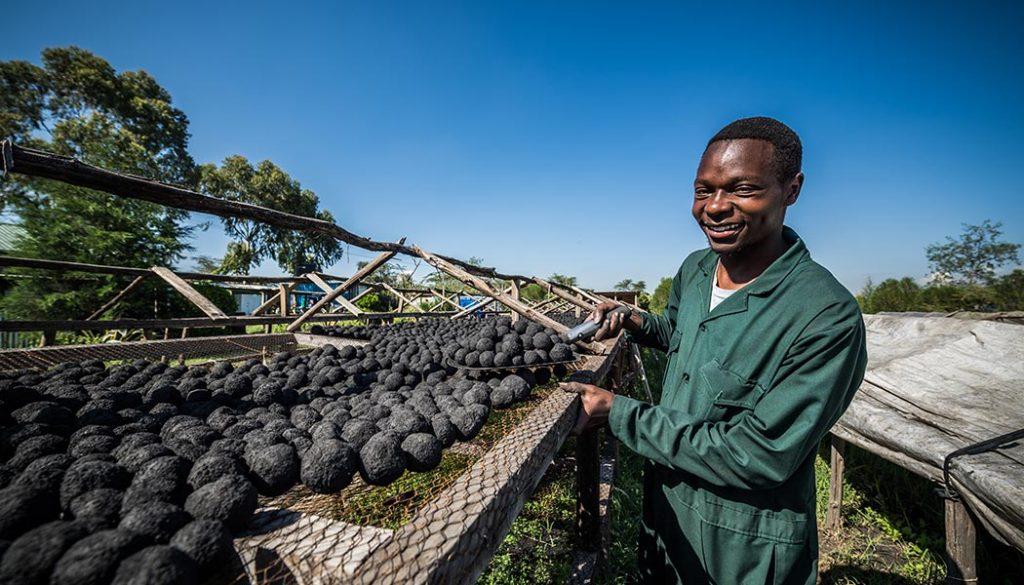
Transform supported Sanivation with a trial using their produced fuel to replace firewood in a tea processing plant. Using firewood as a fuel has multiple environmental impacts, such as land and forest degradation — which can lead to water scarcity — and poor air quality as well as exacerbate gender inequality. Over two years, Transform said that the use of biomass for fuel at the factory has saved 21,000 trees, cuts costs and provided 30 percent of the revenue for a wastewater treatment facility.
Safe water: a global and local challenge
Access to safe water is both a global and intensely local challenge. Scaling up local water solutions through innovation and on-the-ground know how will continue to be essential in converting water crises into water successes. Local entrepreneurs, who see the challenges and the opportunities firsthand, are well suited to figure out how to improve the community based on the community’s needs. Often, however, they are underfunded or fly under the radar. Initiatives like Transform will remain essential to support those efforts because macro problems often require micro solutions.
Image credits: Transform
Racial Equity in Corporate America: Some Glimmers of Optimism


After the death of George Floyd, American corporations committed to advancing equity and racial justice in the workplace, arguably with more fervor than seen in the past several decades. Just Capital, a nonprofit dedicated to tracking and inspiring corporations to adopt more just and responsible practices, provides a tracking mechanism called the Corporate Racial Equity Tracker (CRET) to measure how well those commitments are being fulfilled.
Data recently released from the 2022 CRET reveals a pattern of commitments that are long on promises but considerably shorter on actionable practices and measurable results. In the report, six categories are dominant as they relate to corporate racial equity: anti-discrimination policies, pay equity, racial and ethnic diversity data, education and training programs, responses to mass incarceration, and community investments.
But analyzing whether or not commitments are being met first depends on the corporations’ willingness to report. For example, only 43 percent of companies polled reported data on pay equity. Responses to mass incarceration was reported at a frequency of 45 percent.
It’s difficult not to conclude that no reporting is indicative of no action; after all, even a poor score reflects some effort. Nondisclosure also equates to the absence of accountability and transparency.
The categories that are most reported — anti-discrimination policies at 98 percent, racial and ethnic diversity data at 98 percent, and education and training programs at 91 percent — represent objectives that can be met, in some cases, based on publications and nose-counting alone. In other words, more than publishing an anti-discrimination policy, how is the effectiveness of an anti-discrimination policy intrinsically measured?
For those companies reporting data, a comparison from the 2021 CRET results to 2022 shows some improvement. Workforce diversity data disclosure increased from 86 percent to 91 percent. Board diversity data disclosure increased from 84 percent to 95 percent. Racial and ethnic pay equity analysis disclosure increased from 34 percent to 45 percent. Disclosure of pay ratios increased from 14 percent to 24 percent.
Other categories also reflect a dismal rate of reporting. Only 7 percent of companies disclose their promotion rate by race and ethnicity. Twenty-one percent report providing anti-harassment training, compared to 98 percent of companies that disclose an anti-harassment policy. In addition, only 22 percent disclose the actual results of the pay equity analysis, i.e., pay ratios by race and ethnicity.
But polling proves that commitment to the cause of racial equity is what’s expected. The 2022 CRET reports that 92 percent of Americans say that it is important for companies to promote racial equity in the workplace.
There are two realities for a corporation to consider when it comes to lack of reporting and the need to improve the percentages. The first reality is, get used to it. Corporate America will be subject to increasing scrutiny by stakeholders and investors in the areas of environmental, social and governance (ESG). ESG rankings are indicators of risk, as in who is getting the job done in the present with efficient and sustainable ways of doing business and anticipating the future.
Credit rating agencies like Moody's, S&P and Fitch report ESG ratings. Investors and other stakeholders are paying close attention to rankings and reporting, and most can tell the difference between a substantive program and padding.
The fact that Facebook dropped 700 places out of 1,000 companies ranked is a big deal. Sustainalytics, a sustainability data and analytics firm, gave Tesla a “medium” ESG risk rating, citing weak product governance and other issues—news that made headlines.
And, companies are now more likely to be ranked according to these ESG scores. In 2022, Just Capital ranked Alphabet as number one on ESG metrics. Intel, in the number 2 spot, led Microsoft, followed closely by Salesforce. Salesforce is in the news of late for circulating an employee petition, signed by more than 4,000, to drop the NRA as a client. Examples of employees driving corporate social responsibility (CSR) are plentiful.
As part of the American corporate landscape, the importance of achieving racial equity depends on whether or not corporate leaders subscribe to the notion that a more just company can be more profitable where profitability implies a satisfied, productive workforce.
But the second reality associated with corporate racial equity is that it’s the right thing to do. Surely, there is a point where profitability and societal responsibility can intersect. Corporations would do well to pursue that sweet spot where reporting is more than a satisfactory experience.
Image credit: Kelly L via Pexels
With Plastic Waste Expected to Triple By 2060, The U.S. Announces A Plastics Ban…Sort Of


A new report from the OECD outlines the world’s current plastic use trajectory, arriving at the stark conclusion that our rate of plastic waste will nearly triple by 2060 if no intervening action is taken. The report, titled Global Plastics Outlook: Policy Scenarios to 2060, is set to be released in full on June 21, 2022.
Highlights of the report have been pre-released and include three different scenarios of future forecasting: a baseline scenario with no major changes, a “regional action” policy scenario, and a “global ambition” policy scenario.
Visualizing our mounting plastic waste problem
Under the baseline scenario of forecasting, plastics use is projected to grow from 460 million tons (Mt) in 2019, to 1,231 Mt in 2060. Meanwhile, plastic waste is set to expand from 353 Mt to 1,014 Mt in the same time frame.
Those numbers are hard to wrap your head around. What does one million tons of plastic waste even look like?
Let’s do some math and find out.
A standard plastic container for takeout food weighs about 25 grams, and there are about 450 grams in one pound. Quick math, how many takeout containers in one pound? Right. That’s eighteen takeout containers in one pound.
2,000 pounds in a ton means there are 36,000 takeout containers in one ton. That means 36 billion takeout containers in one million tons. Still with me?
In 2019, there were 353 Mt of plastic waste; that’s 12.7 trillion takeout containers. Woah. Bear in mind as well that a lot of plastic waste comes in much smaller forms like straws, cutlery, cups, and bottles. The moral of the calculation is that we have a serious plastic waste problem.
The report notes an expected tripling of our plastic waste by 2060. So, what can we do?
Recommendations on tackling plastic waste
The report channels its recommendations into four key areas. It advocates for economic incentives to grow the recycled plastics market, boosting innovation for a more circular lifecycle, strengthening domestic policies, and strengthening international cooperation.
Of the plastic waste generated, only 15 percent of it is collected for recycling, but a big chunk of that ends up as recycling residue that still needs disposal. Thus, only 9 percent of all plastic waste in 2019 ended up getting recycled. As it stands, recycled plastics only make up 6 percent of the total plastic feedstock.
The recommendations of the report focus on pushing governments and international organizations to enact policies and legislations that can help reduce plastic use, and ultimately, plastic waste. Plastic waste poses a large threat to our natural environments.
In 2019, 6.1 Mt of plastic waste ended up in rivers, lakes, and oceans (we’ll save you the heartbreaking photo of marine life impaired by plastic pollution). But plastic harms extend beyond surface-level damage.
The production of plastic also takes a toll on the atmosphere, with most plastics being made from fossil fuels. Plastics generated 3.4 percent of global greenhouse gas emissions in 2019.
Legislation against single-use plastics
On Wednesday, the U.S. announced it would begin to phase out single-use plastics. This announcement has been a long time coming and should arrive as welcome news to Americans.
However, the announcement leaves a lot left to be desired. The ban will not come into effect until 2032, and it will only cover national parks and other public lands. Surely, this will not satisfy the authors of the OECD report, nor should it satisfy the general public. The announcement is a far cry from concrete action that’s being taken in other countries.
Australia has outlawed all single-use plastic bags, with some states banning other single-use plastics as well.
China has a ban on plastic straws and plastic bags that started on January 1, 2021.
India is beginning a nationwide ban on single-use plastics July 1. Canada has a plastics ban expected to come into force in late 2022. Scotland’s plastic ban came into effect on June 1, 2022, banning almost all single-use plastics.
Major economies around the world are moving to outlaw the use of single-use plastics, but the world’s largest culprit of plastic waste, the U.S., is dragging its feet on the matter.
While we wait for more robust government legislation, we could all cut back on our own plastic use in an effort to reduce the 12.7 trillion takeout containers worth of plastic waste produced each year.
Image credit: Pixabay
Vegan Cheese is Here to Stay, But the Awful Taste Isn’t


Veganism might not seem like a difficult lifestyle change for a health-conscious planet warrior. But mess with someone’s mozzarella and they may change their tune. Vegan cheese, however, is evolving, and doing so for the better.
Studies show that eliminating cheese is among the hurdles that people face when transitioning to a plant-based diet. If you’ve tried any of the various kinds of vegan cheese, you probably understand why. To many consumers considering changing how they eat, plant-based cheese alternatives don't often live up to their dairy-containing counterparts. Now, the brand So Delicious Dairy-Free is doing its part to change such perceptions with its plant-based lineup.
So Delicious and the transformation of cheese
The company, which has been in business for more than 30 years, says it is devoted to providing superior plant-based cheese that competes with the real thing. All So Delicious products are dairy-free, gluten-free, soy-free and are also verified by the Non-GMO Project. Its "more than the minimum" philosophy promotes thoughtful choices in all business facets: ingredient sourcing, packaging and a commitment to diversity, equity and inclusion.
For National Cheese Day earlier this month, the company even awarded one contest winner an entire year of free So Delicious cheese products. The goal of So Delicious is to create cheese with the same commitments as its other dairy-free products, all while keeping taste at the top of the requirement list.
Once occupying a small niche market, vegan cheese is here to stay
Globally, the vegan cheese market was estimated at $2.5 billion in 2021, and is expected to grow almost 13 percent by 2030. Plant-based lifestyles, particularly among millennials, has boosted this expansive growth. Currently just over 60 percent of U.S. households are currently buying plant-based products.
Over the last decade, the popularity of plant-based food products and lifestyles has skyrocketed. Awareness of animal cruelty, the negative impacts on the environment caused by the dairy industry, and rising acceptance of various health-related allergies such as lactose intolerance, have all contributed to making veganism and flexitarian diets more mainstream.
Vegan and vegetarian diets are expected to revolutionize the food industry world-wide. More restaurant companies are putting themselves on the map to include diet-friendly menu items. Fast food chains including KFC and Burger King have been test marketing plant-based chicken, Chipotle added vegan chorizo, and Cold Stone Creamery has rolled out an almond-based ice cream — the list goes on.
Large franchised chains are seeing these long-term trends and are jumping on the all-inclusive bandwagon. Not only will food corporations see a spike, but even vegan food tourism will continue to grow as demand for plant-based food does the same.
The links between dairy production and climate change
Switching to plant-based cheese can reduce carbon emissions by 50 percent compared to dairy cheese, but studies show that many shoppers do not fully understand how greenhouse gas emissions are tied to food production.
Manure produced by dairy cows creates greenhouse gas emissions, and when handled incorrectly, can taint local water resources. Additionally, unsustainable farming practices can affect the future of prairies, wetlands, and forests, all of which are ecologically essential.
On top of that, consumers often think that meat production alone has the biggest effect on climate change. According to the World Economic Forum, the dairy cheese industry emits more greenhouse gasses than the production of pork, chicken and eggs.
A recent study completed in the U.K. suggests that vegan cheeses produce less than half of the climate impacts and require less than one-third of the land compared to dairy-based cheese.
When passion becomes palatable
Whether they lie in concern over animal rights, personal health, the planet or otherwise, the reasons to try vegan cheese certainly speak volumes. On that point, So Delicious Dairy-Free and other plant-based food companies are furthering their mission to make the taste of their products equally as enticing.
Image credit: So Delicious